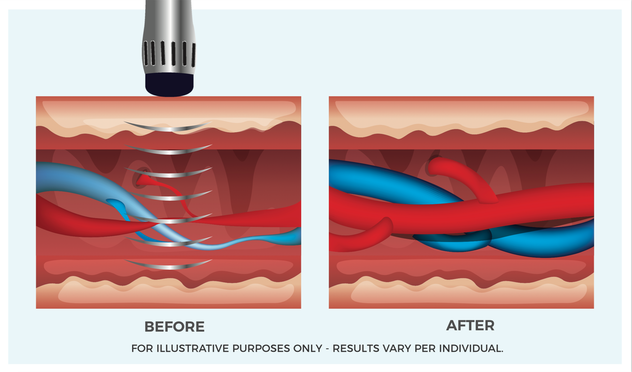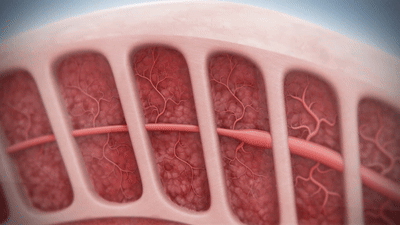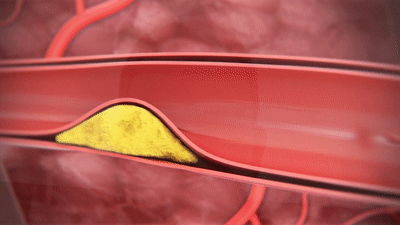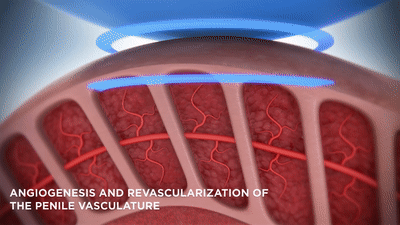Extracorporeal Shock Wave Therapy ESWT
Most men suffering from erectile dysfunction may have vascular problems affecting the vessels that supply blood to the cavernous bodies of the penis, resulting in a decreased ability to develop and maintain an erection.
The end result is an inadequate blood-flow followed by premature draining of an already reduced amount of blood from the cavernous bodies, meaning an erection is not achieved.
Shockwave Therapy has been demonstrated to be one of the treatments available to help ED of this type.
The end result is an inadequate blood-flow followed by premature draining of an already reduced amount of blood from the cavernous bodies, meaning an erection is not achieved.
Shockwave Therapy has been demonstrated to be one of the treatments available to help ED of this type.
See Extracorporeal Shockwave Therapy Data Information
Mechanism of ESWT
Shockwave treatment of erectile dysfunction Ilan Gruenwald, Boaz Appel, Noam D. Kitrey, and Yoram Vardi
Shockwaves (SWs) are acoustic waves that carry energy and when propagating through a medium, can be targeted and focused noninvasively to affect a distant selected anatomical region. When Low Intensity Extracorporeal Shock Wave Therapy LI-ESWT is applied to an organ, the relatively weak yet focused SWs interact with the targeted deep tissues where they cause mechanical stress and microtrauma. This stress and microtrauma (also known as shear stress) induces a cascade of biological reactions that result in the release of angiogenic factors (blood vessel growth factors) which in turn triggers neovascularization (new blood vessel development) of the tissue with subsequent improvement of the blood supply.
With respect to penile function this means new vessel growth with improved blood supply to the penis.
Shockwaves (SWs) are acoustic waves that carry energy and when propagating through a medium, can be targeted and focused noninvasively to affect a distant selected anatomical region. When Low Intensity Extracorporeal Shock Wave Therapy LI-ESWT is applied to an organ, the relatively weak yet focused SWs interact with the targeted deep tissues where they cause mechanical stress and microtrauma. This stress and microtrauma (also known as shear stress) induces a cascade of biological reactions that result in the release of angiogenic factors (blood vessel growth factors) which in turn triggers neovascularization (new blood vessel development) of the tissue with subsequent improvement of the blood supply.
With respect to penile function this means new vessel growth with improved blood supply to the penis.
|
A common cause of erectile dysfunction is related to blood flow to the penis. Good blood flow is needed to develop and maintain an erection..
|
Certain risk factors such as Hypertension, Obesity, Smoking or Diabetes leads to narrowed blood vessels across the body including those connected to the penis. This in turn leads to an overall decrease in blood flow, lower than required to develop and maintain erections.
|
EWST involves the use of painless, low energy shockwaves to improve tissues and vessels in the body. The device is placed against the penis and gentle shockwaves are sent to the area. The shockwaves cause cells to release growth factors, stimulating tissue repair and blood vessel growth.
|
What will ESWT do for you?Treatment outcomes are exempt from being advertised. Please refer to
Extracorporeal Shockwave Therapy Data Information supplied for evidence based studies on ESWT outcomes. These can also be discussed at consultation or completing our ONLINE TEST CALL NOW TO BOOK A CONSULTATION
|
Is The ESWT Right For You?1 in 2 adult males between the ages of 40 and 70 will have sexual changes they consider problematic.
Dr. Morunga consults and examines each patient forming a diagnosis and treatment plan. He will recommend a number of different treatment options which may or may not be inclusive of the ESWT. ESWT Data Information
|
Frequently Asked QuestionsWhat's the procedure?
ESWT involves the use of painless, low energy shockwaves to improve tissues and vessels in the body.
Prior to treatment, a clear gel will be applied on your penis and the base of your penis (either side of the scrotum). The treatment probe is then placed against the skin. You will require a total of 6 treatment sessions.
Some patients will require a second round of 6 treatment sessions to be done 3 weeks after the first round. Some patients will require medicines such as Viagra during the treatment process to improve the neo-vascularization of the penis. ESWT Data Information How does ESWT Work?
The device is placed against the penis and gentle shockwaves are sent to the area. The shockwaves cause cells to release growth factors, stimulating tissue repair and blood vessel growth, called neovascularisation.
ESWT Data Information How long will the procedure take?
You will require a total of 6 treatment sessions.
Some patients will require a second round of 6 treatment sessions to be done 3 weeks after the first round. Some patients will require medicines such as Viagra during the treatment process to improve the neo-vascularization of the penis. What are the Adverse effects?
There should be no pain at all during the procedure. Most patients do not feel anything at all. Some report that they feel a slight tingling.
ESWT Data Information Pre treatment advice?
Growth Factor function is inhibited by the following, therefore
DO NOT SMOKE Do not use illegal drugs, avoid excess alcohol. Do not take salicylic acid (Aspirin) and Anti-inflammatory drugs such as Nurofen® and Voltaren® for two weeks before and six weeks after treatment. If you supplement with omega 3 fatty acids (fish, krill or flax seed oil), stop these during the same period. Please refer to Extracorporeal Shockwave Therapy Data Information supplied for evidence based studies on Pre Treatment Advice. ESWT Data Information Post treatment advice?
Simple Paracetamol for any residual discomfort.
It is recommended that a Penis Pump be purchased and used. Pump protocol: 10 minutes at a pressure of 5-10 mmHg immediately after the shot. Then 10 to 15 minutes twice a day every day for at least 6 weeks. These two sessions can be back to back separated by a 5 minute rest. Viagra can be used or the PShot® be undertaken to augment your result. You are encouraged to return to usual sexual activity immediately after treatment. ESWT Data Information How long do the results last?
Treatment outcomes are exempt from being advertised. Please refer to
Extracorporeal Shockwave Therapy Data Information supplied for evidence based studies on ESWT outcomes. These can also be discussed at consultation or completing our ONLINE TEST ESWT Data Information what is the success rate?
Studies have shown that a mean
average of 60% of patients will have improvements in their IIEF score by more than 5 points, and 70% of patients with have an improvement in the Erectile Dysfunction Inventory of Treatment Satisfaction (EDITS) score by 50% In severe cases of ED where patients could not get an erection even with medicines for their ED (i.e. PDE5 inhibitors), ESWT improved the haemodynamics of penile function in a subgroup of these men, such that PDE5 inhibitors were now able to produce an erection. Overall, it is fair to say around 60-70% of people will benefit from this treatment. Of course 60-70% is not a 100% and this success rate has to be balanced against the cost of the treatment. ESWT Data Information |
Erectile dysfunction (ED) treatment with shock waves
Erectile dysfunction (ED) is a common sexual disorder. It can be defined as the inability to achieve and/or maintain an erection sufficient for satisfactory sexual intercourse. This can have a negative effect on the quality of life of men and their partners. While most often associated with older men, ED affects a significant proportion of men, starting in middle age.
Extracorporeal shock wave therapy has been used for the treatment for erectile dysfunction (ED) of vascular origin for almost a decade. When treating ED with shock wave therapy, low-intensity shock waves are applied to different treatment zones on the penis and on the perineum (crura).
Several studies have investigated the effectiveness of low-intensity extracorporeal shock wave therapy (LiESWT) on ED. Several systematic reviews, which are the highest level of evidence according to the Oxford Centre for Evidence-based Medicine, concluded that LiESWT improves ED measured by the International Index of Erectile Function (IIEF) and Erection Hardness Score (EHS). 7,10,11,12 A systematic review over 14 studies including 833 patients stated that LiESWT »may have the potential to be the first-choice noninvasive treatment for patients with ED. 7 A prospective, randomized, double-blind, placebo-con- trolled trial 1 from 2014 showed that 57% of the men who were treated with LiESWT were able to obtain an erection after treatment and to have sexual intercourse without the use of medication. An Australian study 2 from 2015 investigated the efficacy, safety and patient satisfaction rate after LiESWT: Most patients reported an improvement in the IIEF-5 score by 5 points (60%) and in the Erectile Dysfunction Inventory of Treatment Satisfaction (EDITS) score by > 50% (70%). Most patients were satisfied (scoring 4 out of 5; 67%) and would recommend the therapy to their friends (80%). The efficacy of LiESWT has also been confirmed in animal models, for example in a study 8 published in late 2017, in which rats with a diabetes mellitus-induced ED were treated with shock waves
Extracorporeal shock wave therapy has been used for the treatment for erectile dysfunction (ED) of vascular origin for almost a decade. When treating ED with shock wave therapy, low-intensity shock waves are applied to different treatment zones on the penis and on the perineum (crura).
Several studies have investigated the effectiveness of low-intensity extracorporeal shock wave therapy (LiESWT) on ED. Several systematic reviews, which are the highest level of evidence according to the Oxford Centre for Evidence-based Medicine, concluded that LiESWT improves ED measured by the International Index of Erectile Function (IIEF) and Erection Hardness Score (EHS). 7,10,11,12 A systematic review over 14 studies including 833 patients stated that LiESWT »may have the potential to be the first-choice noninvasive treatment for patients with ED. 7 A prospective, randomized, double-blind, placebo-con- trolled trial 1 from 2014 showed that 57% of the men who were treated with LiESWT were able to obtain an erection after treatment and to have sexual intercourse without the use of medication. An Australian study 2 from 2015 investigated the efficacy, safety and patient satisfaction rate after LiESWT: Most patients reported an improvement in the IIEF-5 score by 5 points (60%) and in the Erectile Dysfunction Inventory of Treatment Satisfaction (EDITS) score by > 50% (70%). Most patients were satisfied (scoring 4 out of 5; 67%) and would recommend the therapy to their friends (80%). The efficacy of LiESWT has also been confirmed in animal models, for example in a study 8 published in late 2017, in which rats with a diabetes mellitus-induced ED were treated with shock waves
Extracorporeal Shockwave Therapy Data Information
1 Olsen, A. B.; Persiani, M.; Boie, S.; Hanna, M.; Lund, L.: Can low-intensity extracorporeal shockwave therapy improve erectile dysfunction? A prospective, randomized, doubleblind, placebo-controlled study, Scandinavian journal of urology, Informa Healthcare Stockholm, 2014, 1-5.
2 Chung, E.; Cartmill, R.: Evaluation of clinical efficacy, safety and patient satis- faction rate after low-intensity extracorporeal shockwave therapy for the treat- ment of male erectile dysfunction: an Australian first open-label single-arm pro- spective clinical trial, BJU international, Wiley Online Library, 2015, 115, 46-49.
3 Michel, M. S.; Ptaschnyk, T.; Musial, A.; Braun, P.; Lenz, S. T.; Alken, P.; Köhr- mann, K. U.: Objective and subjective changes in patients with Peyronie‘s dis- ease after management with shockwave therapy, Journal of endourology, Mary Ann Liebert, Inc., 2003, 17, 41-44.
4 Palmieri, A.; Imbimbo, C.; Longo, N.; Fusco, F.; Verze, P.; Mangiapia, F.; Cre- ta, M.; Mirone, V.: A first prospective, randomized, double-blind, placebocon- trolled clinical trial evaluating extracorporeal shock wave therapy for the treat- ment of Peyronie’s disease. European Urology, Elsevier, 2009, 56(2), 363-370.
5 Zimmermann, R.; Cumpanas, A.; Miclea, F.; Janetschek, Gü.: Extracorporeal shock wave therapy for the treatment of chronic pelvic pain syndrome in males: a randomised, double-blind, placebo controlled study, European urology, Else- vier, 2009, 56, 418-424.
6 Vahdatpour, B.; Alizadeh, F.; Moayednia, A.; Emadi, M.; Khorami, M. H.; Haghdani, S.: Efficacy of Extracorporeal Shock Wave Therapy for the Treatment of Chronic Pelvic Pain Syndrome: A Randomized, Controlled Trial, ISRN urology, Hindawi Publishing Corporation, 2013, 2013, 1-6.
7 Lu, Z.; Lin, G.; Reed-Maldonado, A.; Wang, C.; Lee, Y.C.; Lue, T.F.: Low-in- tensity Extracorporeal Shock Wave Treatment Improves Erectile Function: A Sys- tematic Review and Meta-analysis, European Urology, 2016, 71(2), 223-233.
8 Jeong, H.C; Jeon, S.H.; Qun, Z.G.; Kim K.S.; Choi, S.W.; Bashraheel, F.; Bae,
W.J.; Kim, S.J.; Cho, H.J.; Ha, U.S.; Hong, S.H.; Lee, J.Y.; Moon, D.G.; Kim, S.W.:
Effects of Next-Generation Low-Energy Extracorporeal Shockwave Therapy on Erectile Dysfunction in an Animal Model of Diabetes, World J Mens Health, 2017, Dec; 35(3):186-195.
9 Fojecki, G. L.; Tiessen, S.; Osther, P.J.S.: Extracorporeal shock wave therapy (ESWT) in urology: a systematic review of outcome in Peyronie’s disease, erectile dysfunction and chronic pelvic pain, World Journal of Urology, 2017, 35(1), 1-9.
10 Clavijo, R. I.; Kohn, T. P.; Kohn, J. R. & Ramasamy, R.: Effects of Low-Inten- sity Extracorporeal Shockwave Therapy on Erectile Dysfunction: A Systematic Review and Meta-Analysis, The journal of sexual medicine, 2017, 14, 27-35
11 Man, L. & Li, G.: Low-Intensity Extracorporeal Shock Wave Therapy for Erectile Dysfunction: a Systematic Review and Meta-Analysis., Urology, 2017
12 Angulo, J. C.; Arance, I.; de Las Heras, M. M.; Meilán, E.; Esquinas, C. & Andrés, E. M.: Efficacy of low-intensity shock wave therapy for erectile dysfunc- tion: A systematic review and meta-analysis. Actas urologicas espanolas, 2017, 41, 479-490
2 Chung, E.; Cartmill, R.: Evaluation of clinical efficacy, safety and patient satis- faction rate after low-intensity extracorporeal shockwave therapy for the treat- ment of male erectile dysfunction: an Australian first open-label single-arm pro- spective clinical trial, BJU international, Wiley Online Library, 2015, 115, 46-49.
3 Michel, M. S.; Ptaschnyk, T.; Musial, A.; Braun, P.; Lenz, S. T.; Alken, P.; Köhr- mann, K. U.: Objective and subjective changes in patients with Peyronie‘s dis- ease after management with shockwave therapy, Journal of endourology, Mary Ann Liebert, Inc., 2003, 17, 41-44.
4 Palmieri, A.; Imbimbo, C.; Longo, N.; Fusco, F.; Verze, P.; Mangiapia, F.; Cre- ta, M.; Mirone, V.: A first prospective, randomized, double-blind, placebocon- trolled clinical trial evaluating extracorporeal shock wave therapy for the treat- ment of Peyronie’s disease. European Urology, Elsevier, 2009, 56(2), 363-370.
5 Zimmermann, R.; Cumpanas, A.; Miclea, F.; Janetschek, Gü.: Extracorporeal shock wave therapy for the treatment of chronic pelvic pain syndrome in males: a randomised, double-blind, placebo controlled study, European urology, Else- vier, 2009, 56, 418-424.
6 Vahdatpour, B.; Alizadeh, F.; Moayednia, A.; Emadi, M.; Khorami, M. H.; Haghdani, S.: Efficacy of Extracorporeal Shock Wave Therapy for the Treatment of Chronic Pelvic Pain Syndrome: A Randomized, Controlled Trial, ISRN urology, Hindawi Publishing Corporation, 2013, 2013, 1-6.
7 Lu, Z.; Lin, G.; Reed-Maldonado, A.; Wang, C.; Lee, Y.C.; Lue, T.F.: Low-in- tensity Extracorporeal Shock Wave Treatment Improves Erectile Function: A Sys- tematic Review and Meta-analysis, European Urology, 2016, 71(2), 223-233.
8 Jeong, H.C; Jeon, S.H.; Qun, Z.G.; Kim K.S.; Choi, S.W.; Bashraheel, F.; Bae,
W.J.; Kim, S.J.; Cho, H.J.; Ha, U.S.; Hong, S.H.; Lee, J.Y.; Moon, D.G.; Kim, S.W.:
Effects of Next-Generation Low-Energy Extracorporeal Shockwave Therapy on Erectile Dysfunction in an Animal Model of Diabetes, World J Mens Health, 2017, Dec; 35(3):186-195.
9 Fojecki, G. L.; Tiessen, S.; Osther, P.J.S.: Extracorporeal shock wave therapy (ESWT) in urology: a systematic review of outcome in Peyronie’s disease, erectile dysfunction and chronic pelvic pain, World Journal of Urology, 2017, 35(1), 1-9.
10 Clavijo, R. I.; Kohn, T. P.; Kohn, J. R. & Ramasamy, R.: Effects of Low-Inten- sity Extracorporeal Shockwave Therapy on Erectile Dysfunction: A Systematic Review and Meta-Analysis, The journal of sexual medicine, 2017, 14, 27-35
11 Man, L. & Li, G.: Low-Intensity Extracorporeal Shock Wave Therapy for Erectile Dysfunction: a Systematic Review and Meta-Analysis., Urology, 2017
12 Angulo, J. C.; Arance, I.; de Las Heras, M. M.; Meilán, E.; Esquinas, C. & Andrés, E. M.: Efficacy of low-intensity shock wave therapy for erectile dysfunc- tion: A systematic review and meta-analysis. Actas urologicas espanolas, 2017, 41, 479-490
Further Studies
- Initial experience with linear focused shockwave treatment for erectile dysfunction: a 6-month follow-up pilot study Y Reisman, A Hind, A Varaneckas, I Motil - International Journal of …, 2015 - nature.com
- Effectiveness of low intensity extracorporeal shock wave therapy on patients with erectile dysfunction (ED) who have failed to respond to PDE5i therapy. A pilot …A Bechara, A Casabé, W De Bonis, J Nazar - Arch Esp Urol, 2015 - restoris.
- Extracorporeal shock wave therapy (ESWT) in urology: a systematic review of outcome in Peyronie’s disease, erectile dysfunction and chronic pelvic pain. Grzegorz Lukasz Fojecki, Stefan Tiessen & Palle Jörn Sloth Osther World Journal of Urology volume 35, pages 1–9(2017)
- Comparison of the effects of extracorporeal shock wave therapy and a vacuum erectile device on penile erectile dysfunction: a randomized clinical trial. Qi T1, Ye L, Wang B, Zhang B, Chen J.
- Vardi Y., Appel B., Jacob G., Massarwi O., Gruenwald I. (2010) Can low-intensity extracorporeal shockwave therapy improve erectile function? A 6-month follow-up pilot study in patients with organic erectile dysfunction. Eur Urol 58: 243–248 [PubMed]
- Vardi Y., Appel B., Kilchevsky A., Gruenwald I. (2012) Does low intensity extracorporeal shock wave therapy have a physiological effect on erectile function? Short-term results of a randomized, double-blind, sham controlled study. J Urol 187: 1769–1775 [PubMed]
- Vasyuk Y., Hadzegova A., Shkolnik E., Kopeleva M., Krikunova O., Iouchtchouk E., et al. (2010) Initial clinical experience with extracorporeal shock wave therapy in treatment of ischemic heart failure. Congestive Heart Failure 16: 226–230 [PubMed]





